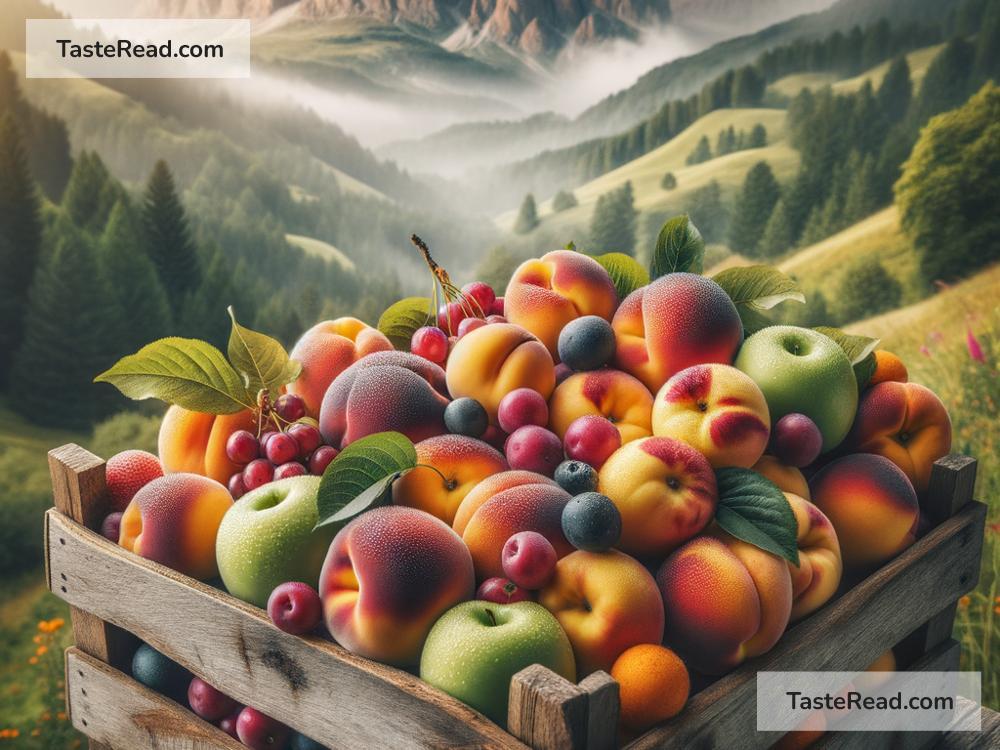Why Fruits Grown at Higher Altitudes Have Enhanced Sweetness
If you’ve ever tasted an apple, grape, or berry from a mountainous region, you might have noticed how deliciously sweet it is. Fruits grown at higher altitudes often taste sweeter and more flavorful compared to those from lower elevations. But why is this the case? What makes high-altitude fruits stand out? In this article, we’ll explore the science behind why fruits grown at higher altitudes have enhanced sweetness.
Understanding Altitude and Its Effects on Plants
Altitude refers to how high a location is above sea level. Higher altitudes often mean cooler temperatures, thinner air, and more exposure to the sun’s rays. These unique conditions create challenges for plants, but they can also lead to some surprising benefits, especially when it comes to how fruits grow and ripen.
To understand why high-altitude fruits are sweeter, we need to look at a few key factors: temperature, sunlight, plant metabolism, and the way fruits store sugars.
Cooler Temperatures at Night
One of the most important reasons high-altitude fruits taste sweeter is the cooler night temperatures in mountainous areas. At higher elevations, the days might be sunny and warm, but nights are usually much cooler than they are at lower altitudes. This drastic temperature change plays a big role in how plants and fruits develop.
When temperatures drop at night, the fruit’s metabolism slows down. Plants work hard during the day, absorbing sunlight and using it to produce sugar through a process called photosynthesis. At night, these sugars are stored. In warmer conditions, fruits continue to metabolize (or burn) some of those sugars even during the night, which can lead to less sweetness. But in cooler nighttime conditions, fruits don’t burn as much sugar—they save it instead. The result? A sweeter fruit by the time it’s harvested.
Sunlight and UV Rays
High altitudes mean closer proximity to the sun, which leads to more intense sunlight and ultraviolet (UV) rays. While UV rays might sound harmful, plants have natural ways to protect themselves. This extra exposure to sunlight helps fruits ripen faster and develop stronger flavors.
Sunlight triggers photosynthesis, the process where plants turn sunlight into energy, which they use to create sugars. More sunlight means more energy for the plant, resulting in a fruit that is packed with sweet-tasting natural sugars. Additionally, UV exposure can boost the production of antioxidants and compounds in the fruit, which not only improve sweetness but enhance its overall flavor and nutritional value.
Stress and Sugar Production
Plants grown in high-altitude regions often face more stress due to the harsher conditions—such as cold nights, strong winds, and fluctuating temperatures. Interestingly, plants have an incredible ability to adapt to these stressful environments.
When plants are stressed, they often produce more sugars to protect themselves. Sugars act like antifreeze, helping fruits cope with cold and other challenges. For example, grapes grown in mountainous vineyards tend to have higher sugar levels compared to those grown in lower, more temperate areas. This sugar production boosts the sweetness of the fruit.
Slower Growth, More Flavor
At higher altitudes, fruits typically grow more slowly. The cooler weather and shorter growing seasons mean that fruits take longer to ripen compared to those grown in warmer, lower elevations. This slow growth allows the plant to concentrate its nutrients and sugars into the fruit. It’s a little like cooking—you can think of it as slow roasting versus rushing something on high heat. Slow growth means that fruits have more time to “marinate” in their natural sweetness!
Water Availability and Sugar Concentration
High-altitude regions often have less available water, whether due to rocky soil, steep slopes, or a drier climate. When plants receive less water, the fruits they produce tend to have less water content and a higher concentration of sugars. This phenomenon leads to smaller but sweeter fruits with intensified flavors.
For example, many high-altitude farms grow apples, peaches, and berries that are smaller in size compared to those from low elevations, but they’re generally much sweeter and juicier. The lack of water dilution makes the fruits feel like a burst of concentrated flavor in every bite!
Examples of High-Altitude Sweet Fruits
Some famous examples of sweet high-altitude fruits include Himalayan apples, cherries from mountainous regions, and Andean berries. Many wine vineyards are located in high-altitude areas as well, because the grapes grown there have rich, sweet flavors and balanced acidity. Farmers and growers often choose high-altitude settings for these crops precisely because the unique growing conditions lead to better-quality produce.
A Natural Gift from the Mountains
Fruits grown at higher altitudes are a true testament to nature’s adaptability. The unique combination of cooler temperatures, intense sunlight, slower growth, and plant stress results in fruits that taste sweeter and fuller in flavor. They may not always look as large or uniform as their lowland counterparts, but their taste more than makes up for it.
Next time you bite into a high-altitude fruit, take a moment to appreciate how the landscape and weather helped shape its incredible sweetness. Whether it comes from the peaks of the Rockies, the slopes of the Andes, or the hills of the Himalayas, fruits from higher altitudes are proof that sometimes, harsher environments produce the most delicious rewards!


